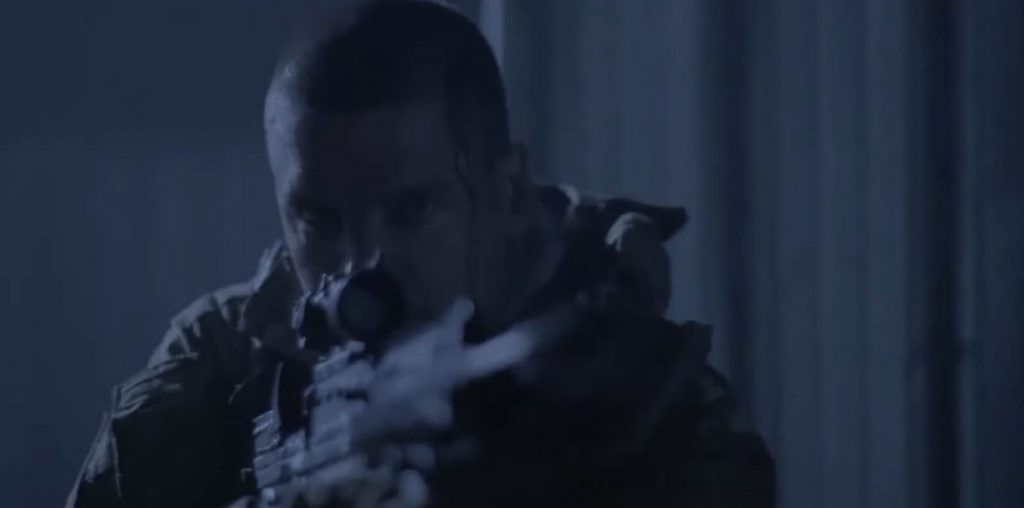
Lessons I’ve Learned From Watching “The Bungler”
In accordance with “The Bunglers,” (Section V:198-99), little to no attention should be paid to the script. After all, a film is visual and junk, and besides, scripts are printed on paper and stuff and have to be read and, seriously, who reads anymore? I mean— Yeah.
So we’ll just come up with a simple story. A woman … how about a woman? Yeah. A woman, whose seedy, criminal husband recently offed himself decides to collect on his loans. The thing is, this Russian dude who owes her seven large won’t pay, so she enlists her brother-in-law to hire two ‘tough looking men’ to go to the Russian dude and collect on the loan. The guys have to be tough looking to prove to this welcher that this woman means business. Only these two tough looking dudes aren’t tough at all. Actually, they’re bumbling do-gooders whose ineptness and complete inexperience causes wackiness to ensue. Only wackiness doesn’t ensue because—
—and this leads to our second lesson—
—comedy requires timing, a certain finesse in delivery and execution. Having “actors” repeat lines as awkwardly as possible, and not bothering to develop a weird thing called pacing for individual scenes in which the alleged comedy is supposed to take place, doesn’t cut the mustard, which leads us to the third lesson we can learn from “The Bunglers … ”
Pacing. Pacing really isn’t important to a film. Individual scenes shouldn’t really be toiled with. The movie as a whole is important, not those annoyances, or scenes for those not in the know, that make up the movie. Instead, or at least in accordance with “The Bunglers,” (Section II:12-19), scenes should be shot in as few takes as possible with no consideration whatsoever paid to the pacing. Let’s move through a scene as fast as possible. Just get it out of the way ‘cause we have bigger fish to fry. Or, let’s take a scene that should have a quicker, more whimsical pacing and turn it into an interminable, sleep-inducing headache. And to augment that headache, let’s just set the camera heah and point it over theah.
Lesson 4 (courtesy of those responsible for “The Bunglers”):
Instead of actually composing a shot, we’ll just point the camera at the actors. But we’ll turn in just a little, so the walls in the background, for example, are angled as opposed to being flat—that way it appears as though we put thought into the composition; or, to put it mathematically, slight x angle = illusion of competency; angle = good, flat = bad. Flat should be reserved for the performances and the performances alone. Which leads us to—
—you guessed it—
—lesson five: acting.
GUY #1
(wooden; like a robot)
Would you, uh,
(fast)
wouldyoulikefrieswiththat?
GUY #2
(wooden; robot)
Sure. Oh, and, uh, you know, man, uhm, we’re, uh,
you know, making a movie. Wanna be in it?
GUY #1
(looks around room; oblivious; shrugs)
I guess.
Acting is many things. It is developing a history for a character, layering it with nuances not mentioned in the script, sometimes not even shown in the film, it is about losing oneself in a character, or creating someone so real, so tangible that the audience feels as though they could bump into the man/woman they’re watching on the screen at a local bar or movie theater. But most importantly, acting is about listening and reacting—something the actors in “The Bunglers” show no interest in, opting instead to wait for their turn to deliver lines—as badly as possible—while the other is speaking.
(As an aside, when characters are assigned as cops, we should, as an homage to “The Bunglers,” give a guy a belt with a holster and a baseball cap and windbreaker the word POLICE written in white letters. And to further his authenticity, we’ll have he speak random numbers into a two-way radio, as though the he is relaying information to whomever is on the other end. Random words and number show research.
See: “Section V:198-99” above
See also: “Section II:12-19”
See also: lack of character names, and the actors who “played” them, throughout this review)
Lesson 5:
Direction
Dir … what? Seriously. I’m not sure what you’re talking about. Actors just do what’s written, or if not written, what lines they’ve been told to say.
GUY #1
Okay, so I want you to stand there … no, there … right
there … good … and say this, that, and the other thing.
GUY #2
You got it. How do you want me to play the scene?
GUY #1
Say what?
GUY #2
The scene. How do you want me to play it?
Guy #1 stares at him with hollow eyes.
GUY #2 (CONT’D)
You know, uh, what do you want me to do?
GUY #1
Oh. Well, I want you to stand there, and say this, that,
and the other thing.
GUY #2
Yeah, I got that. But what do I do?
GUY #1
Just stand there—
GUY #2
No, no, no. You’re not getting me. What. Do. I. Do?
GUY #1
—and say this, that, and the other thing.
Guy #1 sighs and throws his hands in the air, and then he shrugs and hurries through the scene because he’s got a hot date in an hour.
In accordance with “The Bunglers,” films should not be engaging in the least. In fact, they should be so bland and uninteresting that they sap the inspiration right out of those assigned to review them. And those assigned to review movies, in lieu of writing an actual, objective review, writes what would ultimately be the equivalent of alternately typing the words ‘Sarcasm,’ and, ‘Oh Jesus, that sucked,’ nine hundred and fifteen times.
